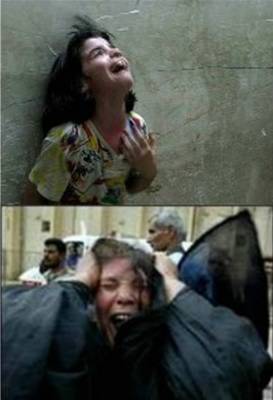"Palestinians in the Qalandiya refugee camp north of Jerusalem were up before dawn on the first of August, sharing breakfast among relatives. Their food and water would need to sustain them until sunset on this first day of the holy month of Ramadan. At the same time, a group of Israelis in the Defense Forces were conducting a raid in the camp. It was one of 84 “search and arrest operations” that week, fewer than the weekly average of 100 during 2011. Met with the resistance of young men throwing stones, the Israeli soldiers responded with live fire. They shot dead two young Palestinian men.
Gazans know something about barriers and restrictions. When Palestinian fishermen were angling for a catch on 28 July, they themselves became prey to Israeli naval boats, which fired on them. No one was injured, but the message – not to stray beyond the three nautical miles permitted them beyond their own shore – was sent. Inland, restrictions are even more debilitating. Zero truckloads for export left Gaza through the Israeli-controlled Kerem Shalom crossing during the week. That’s less than the 2011 weekly average of seven truckloads for export. That’s much less than the weekly average of 240 truckloads before Israel imposed its blockade on Gaza in 2007. Weekly non-violent demonstrations against border control also take place in Gaza, such as those in Beit Hanoun for the last three years. But it is violent-Hamas-controlled-Gaza that usually makes the news."
Gazans know something about barriers and restrictions. When Palestinian fishermen were angling for a catch on 28 July, they themselves became prey to Israeli naval boats, which fired on them. No one was injured, but the message – not to stray beyond the three nautical miles permitted them beyond their own shore – was sent. Inland, restrictions are even more debilitating. Zero truckloads for export left Gaza through the Israeli-controlled Kerem Shalom crossing during the week. That’s less than the 2011 weekly average of seven truckloads for export. That’s much less than the weekly average of 240 truckloads before Israel imposed its blockade on Gaza in 2007. Weekly non-violent demonstrations against border control also take place in Gaza, such as those in Beit Hanoun for the last three years. But it is violent-Hamas-controlled-Gaza that usually makes the news."
Elsewhere in the West Bank, civil society organizers continued to lead hundreds in weekly demonstrations against theWest Bank barrier and other barriers erected by the occupying power to restrict the movement of Palestinians. Thirty-six demonstrators suffered injuries in this week alone." (thanks Michael)








